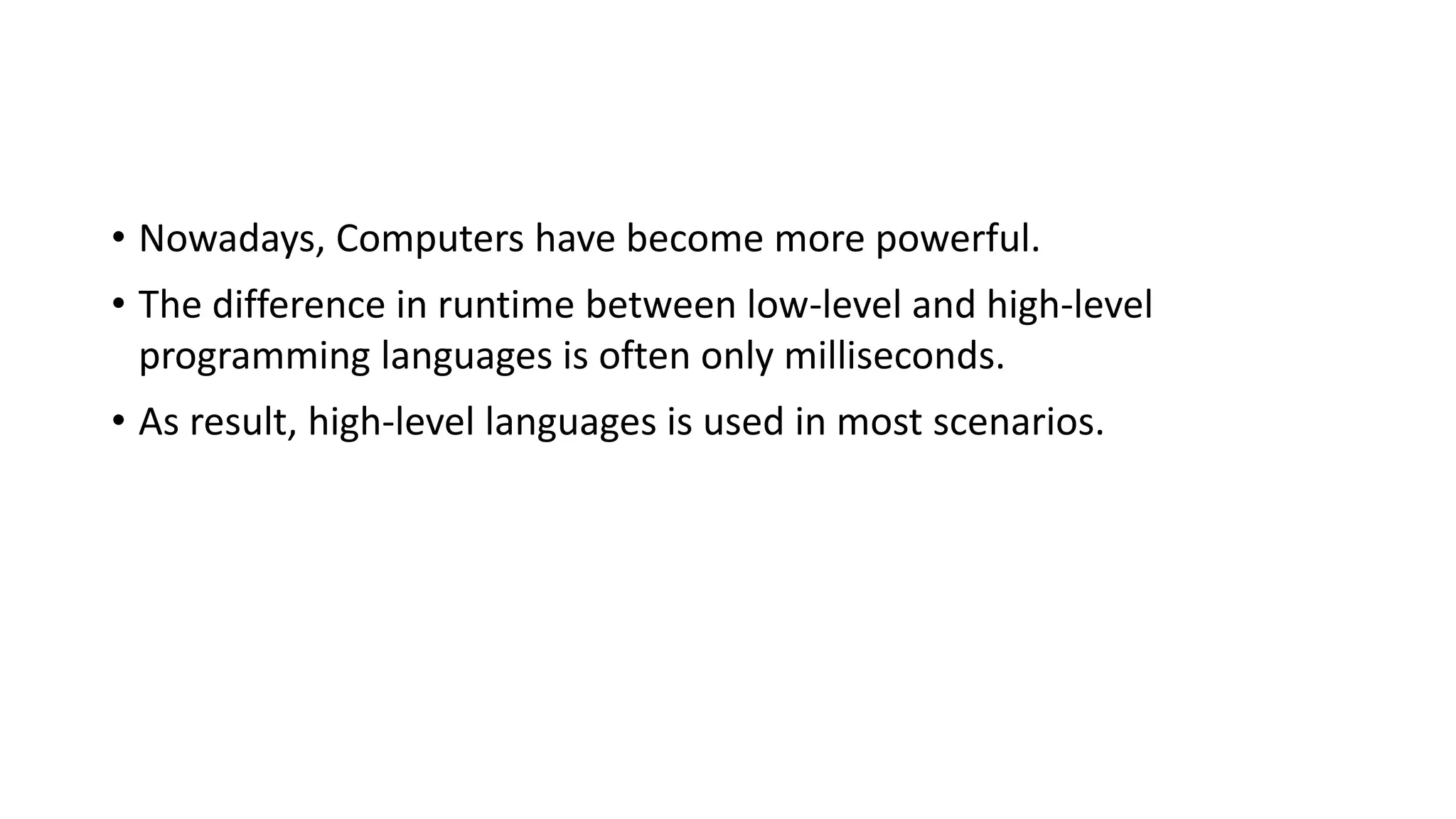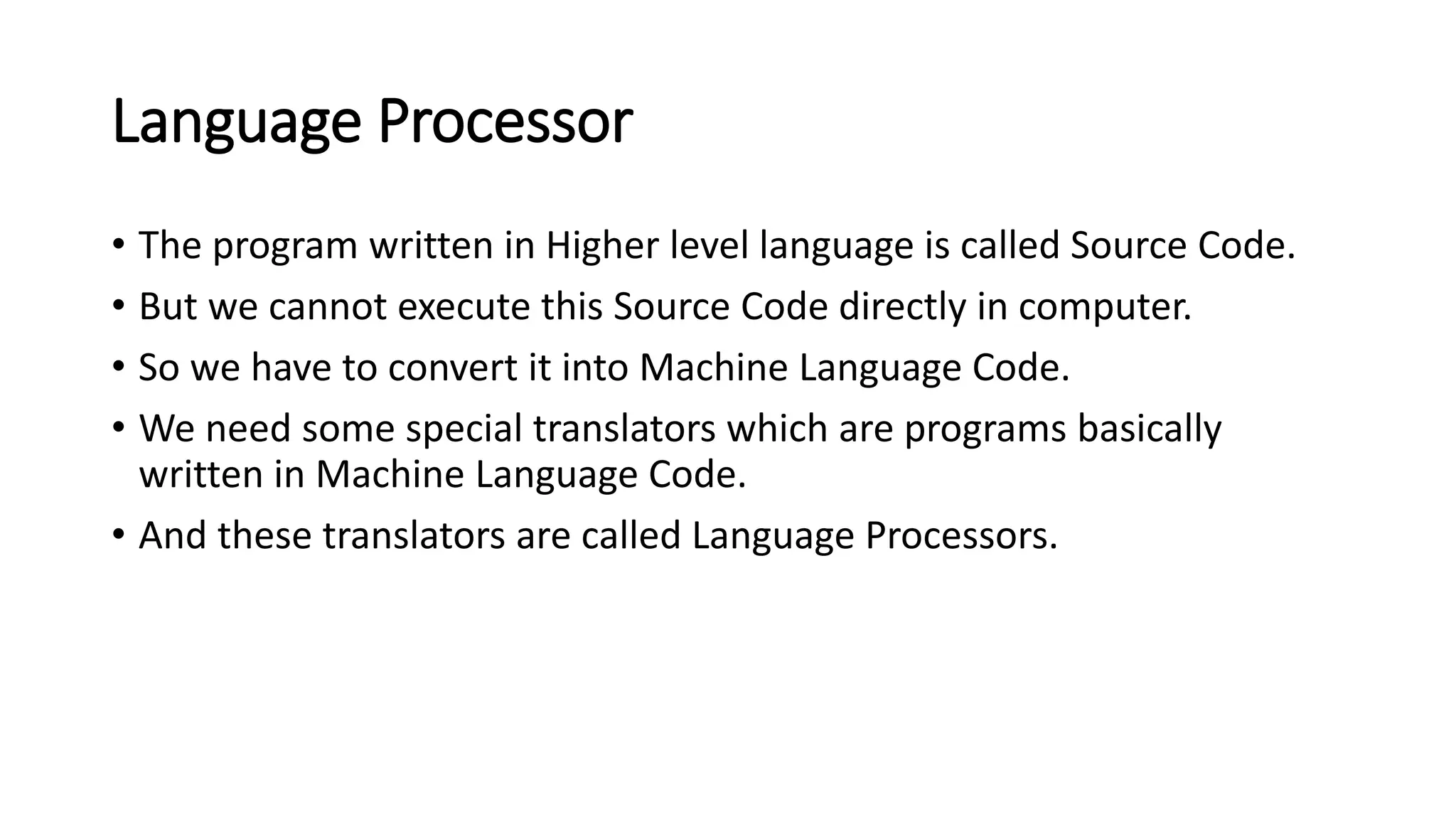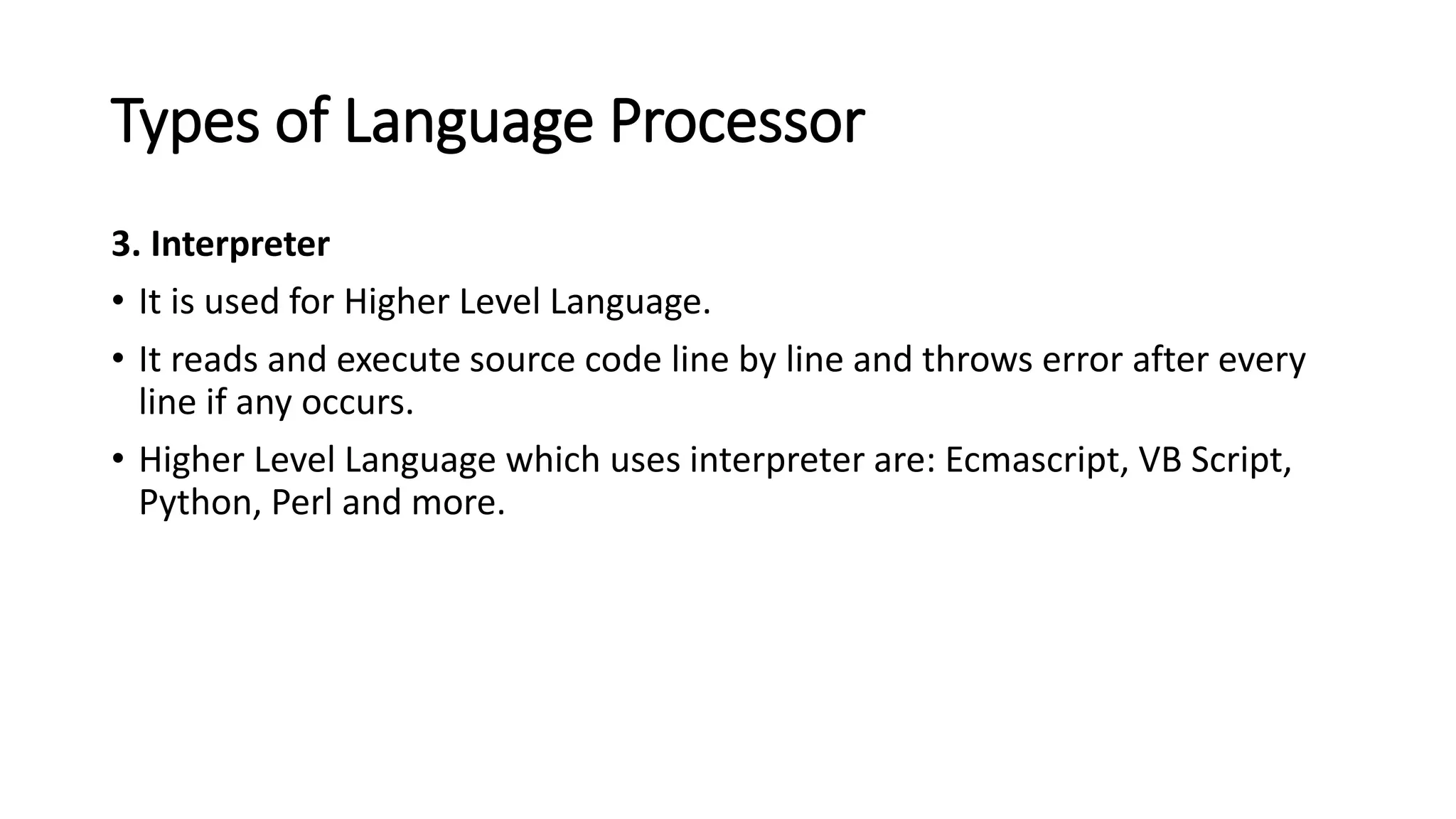The document explains programming languages as tools for writing instructions for computers to execute, highlighting the distinction between low-level and high-level languages. Low-level languages are closer to machine code and offer precise control but are harder for humans to read, while high-level languages are more user-friendly but take longer to convert into machine code. It also introduces language processors—compilers, assemblers, and interpreters—which convert higher-level languages into machine language for execution.









